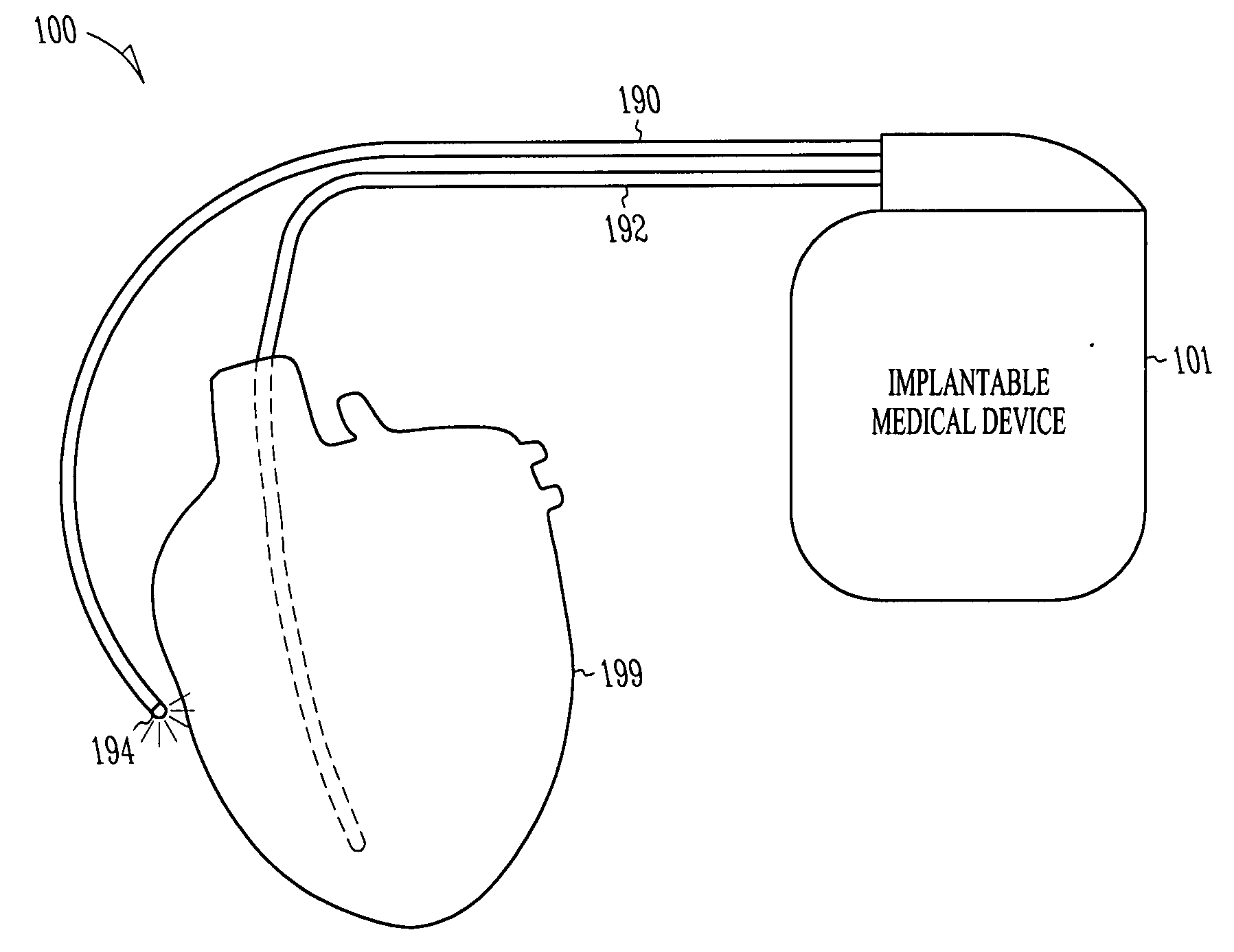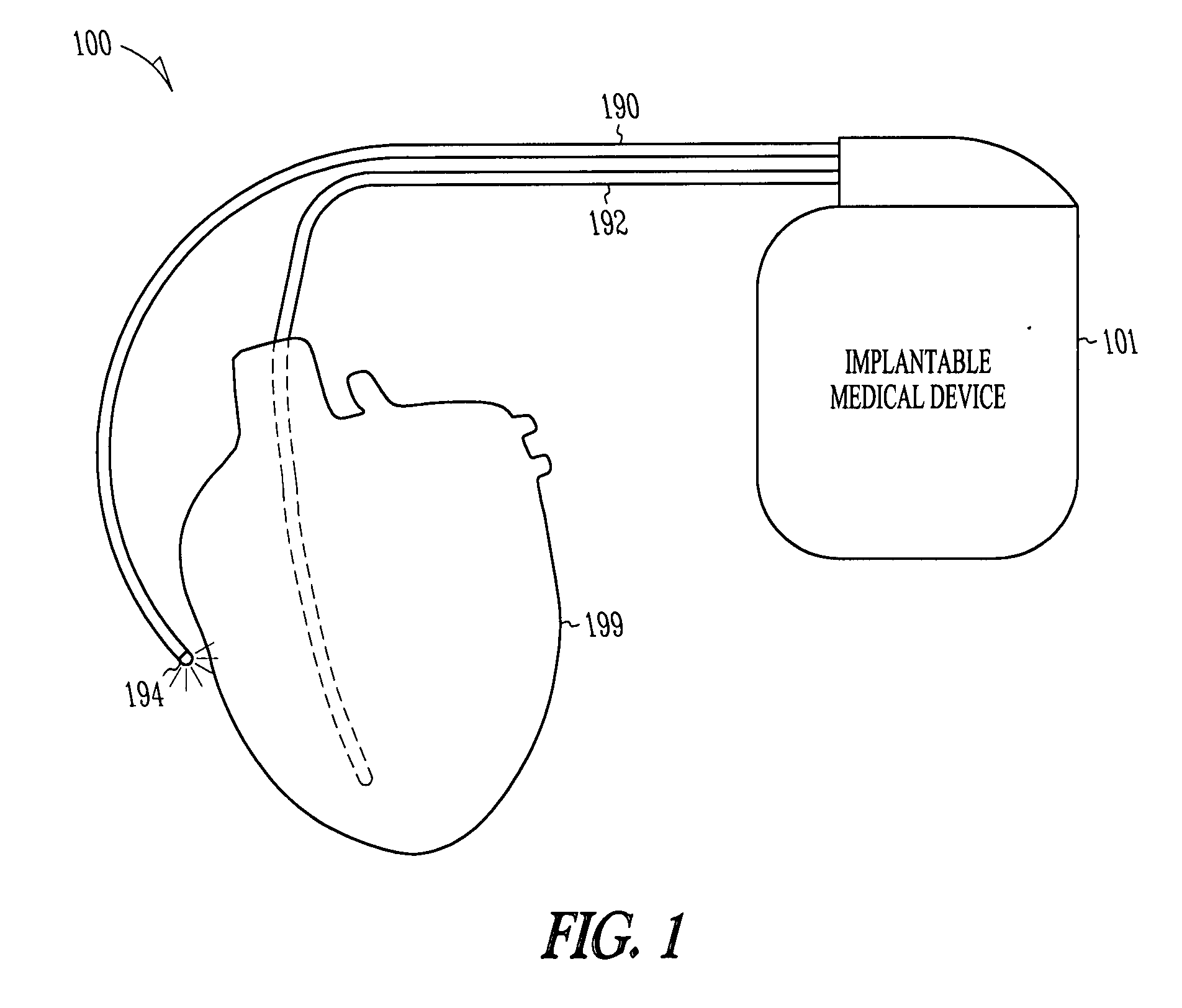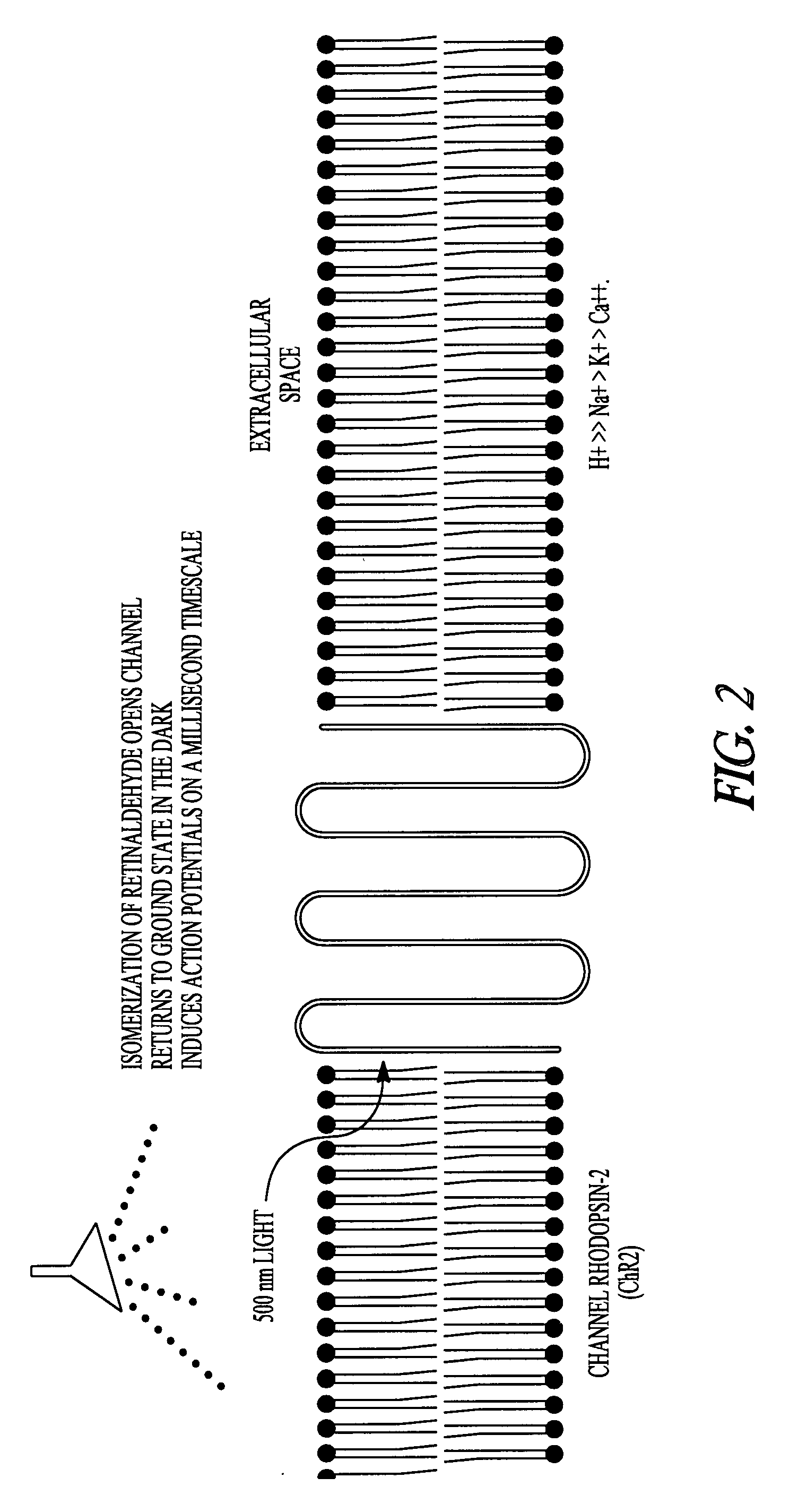Optical depolarization of cardiac tissue
- Summary
- Abstract
- Description
- Claims
- Application Information
AI Technical Summary
Benefits of technology
Problems solved by technology
Method used
Image
Examples
Embodiment Construction
Definitions
[0025]A “vector” or “construct” (sometimes referred to as gene delivery or gene transfer “vehicle”) refers to a macromolecule or complex of molecules comprising a polynucleotide to be delivered to a host cell, either in vitro or in vivo. The polynucleotide to be delivered may comprise a sequence of interest for gene therapy. Vectors include, for example, transposons and other site-specific mobile elements, viral vectors, e.g., adenovirus, adeno-associated virus (AAV), poxvirus, papillomavirus, lentivirus, herpesvirus, foamivirus and retrovirus vectors, and including pseudotyped viruses, liposomes and other lipid-containing complexes, and other macromolecular complexes capable of mediating delivery of a polynucleotide to a host cell, e.g., DNA coated gold particles, polymer-DNA complexes, liposome-DNA complexes, liposome-polymer-DNA complexes, virus-polymer-DNA complexes, e.g., adenovirus-polylysine-DNA complexes, and antibody-DNA complexes. Vectors can also comprise other...
PUM
| Property | Measurement | Unit |
|---|---|---|
| Wavelength | aaaaa | aaaaa |
| Wavelength | aaaaa | aaaaa |
| Sensitivity | aaaaa | aaaaa |
Abstract
Description
Claims
Application Information
 Login to View More
Login to View More - R&D
- Intellectual Property
- Life Sciences
- Materials
- Tech Scout
- Unparalleled Data Quality
- Higher Quality Content
- 60% Fewer Hallucinations
Browse by: Latest US Patents, China's latest patents, Technical Efficacy Thesaurus, Application Domain, Technology Topic, Popular Technical Reports.
© 2025 PatSnap. All rights reserved.Legal|Privacy policy|Modern Slavery Act Transparency Statement|Sitemap|About US| Contact US: help@patsnap.com



